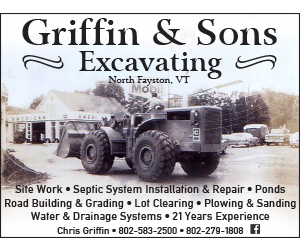To The Editor:
This letter is addressed to the Mad River Valley Community.
It is with a heavy heart that I share with you that I will be moving on from my role as community planner for the Mad River Valley Planning District (MRVPD) and accepting a new position as the outreach and communications coordinator for the Vermont Farm & Forest Viability Program at the Vermont Housing & Conservation Board.
Having spent time living and working in community development abroad as well as other parts of the state, I find it challenging to capture in words the outstanding spirit of collaboration, commitment and care that characterizes the Mad River Valley. It has been the privilege of my career thus far to have been involved in such an engaged and connected community and to have been able to offer support and assistance to so many stewards and change agents from a variety of backgrounds through the collaborative work of MRVPD.
As the outset of the Mad River Valley Vision Statement (2015) proudly displayed above my desk reads: “The Mad River Valley is an innovative, vibrant, connected and caring community, honoring its past, celebrating its landscape, and actively pursuing its potential. Our vision is to be a welcoming community. …” Simply put, you have all made me feel so welcome here – welcome to explore, build relationships and pursue initiatives that honor this vision. Thank you; I am eternally grateful to have had the opportunity to learn, grow, empower and be empowered with you.
This next step is extremely bittersweet, but my passion for food systems is a driving force in my personal and professional life, and I feel compelled to pursue this opportunity that engages the full spectrum of my mission and interest areas. I am, however, excited to continuing supporting producers in The Valley through my new role. My last official day with the MRVPD will be July 19, 2019, though I look forward to keeping in touch.
A final note on community and addressing complex challenges: Farmer, activist and poet Wendell Berry captures the crux of problem solving at any scale best. Berry writes, “Though many of our worst problems are big, they do not necessarily have big solutions. Many of the needed changes will have to be made in individual lives, in families and households, and in local communities.” He describes the best solution as “that which causes a ramifying series of solutions. … Good solutions exist only in proof, and are not to be expected from some absentee owners or absentee experts. Problems must be solved in work and in place, with particular knowledge, fidelity, and care.”
The mentorship and opportunities I have received working with Joshua at the MRVPD have only underscored the truth of this ethos and I am beyond excited to witness the ramifying series of solutions this community is so poised to achieve.
With gratitude,
Mariah Noth






